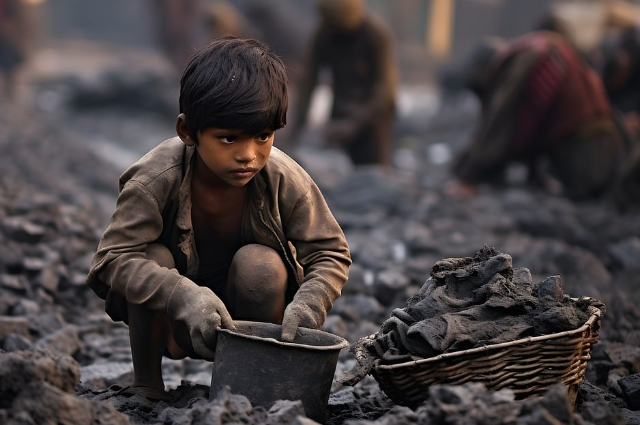
Image by Dipak Patel from Pixabay
Introduction
Child labour continues to be a pressing issue in India, despite numerous legal frameworks and social initiatives designed to eliminate it. This complex problem is deeply intertwined with socio-economic challenges such as poverty, limited access to education, and inadequate law enforcement. This article delves into the root causes of child labour, its devastating consequences, and the ongoing efforts to combat this problem in India.
Causes of Child Labour
- Poverty: Poverty remains the most significant driver of child labour in India. Many families, struggling to make ends meet, depend on the additional income generated by their children. This situation traps children in a cycle of poverty, as they are forced to work rather than pursue an education, ultimately limiting their future employment prospects and keeping them in low-paying jobs as adults.
- Lack of Access to Education: The lack of accessible and quality education is both a cause and an effect of child labour. In rural areas and urban slums, schools often suffer from a lack of resources, poorly trained staff, and inadequate infrastructure. These challenges make education less appealing to families, who may prioritize immediate financial gain over long-term educational benefits for their children.
- Cultural and Social Factors: Cultural norms and traditions can also contribute to the prevalence of child labour. In some communities, it is customary for children to join the workforce at an early age, often following in the footsteps of their parents. Additionally, there is sometimes a lack of awareness regarding the detrimental effects of child labour and the importance of education, which further perpetuates the problem.
- Weak Enforcement of Laws: Although India has enacted laws to combat child labour, such as the Child Labour (Prohibition and Regulation) Act of 1986 and the Juvenile Justice (Care and Protection of Children) Act of 2015, these laws are not always effectively enforced. Corruption, insufficient resources, and a lack of training among law enforcement officials often undermine efforts to protect children from exploitation.
Consequences of Child Labour
- Health Risks: Children engaged in labour are frequently exposed to hazardous working conditions, which can lead to a host of physical and mental health problems. Many child labourers suffer from malnutrition, respiratory issues, injuries, and chronic health conditions as a result of their work environments.
- Loss of Childhood: Child labour robs children of their childhood, depriving them of opportunities to play, learn, and grow in a safe and nurturing environment. The psychological and emotional toll can be profound, leading to issues such as anxiety, depression, and low self-esteem.
- Perpetuation of Poverty: The cycle of poverty is perpetuated when children are forced into labour, as they are often unable to complete their education. This lack of education severely limits their future employment opportunities, trapping them in low-paying, unskilled jobs and continuing the cycle of poverty for generations.
Efforts to Combat Child Labour
- Legislation: India has introduced several laws aimed at addressing child labour. The Child Labour (Prohibition and Regulation) Amendment Act of 2016 prohibits the employment of children under 14 in any occupation and restricts adolescents (aged 14-18) from working in hazardous jobs. Additionally, the Right to Education Act of 2009 mandates free and compulsory education for children aged 6 to 14, aiming to reduce child labour by encouraging school attendance.
- Government Initiatives: The Indian government has implemented various programs to combat child labour, such as the National Child Labour Project (NCLP) Scheme, which seeks to rehabilitate child labourers by providing them with education and vocational training. The Integrated Child Protection Scheme (ICPS) also aims to create a protective environment for children, helping to prevent them from being exploited.
- NGO Efforts: Numerous non-governmental organizations (NGOs) in India are actively working to combat child labour. Groups like Bachpan Bachao Andolan (BBA) and Childline India Foundation rescue and rehabilitate child labourers, raise public awareness about the issue, and advocate for stronger enforcement of child labour laws.
- Corporate Social Responsibility (CSR): Many companies in India are addressing child labour through Corporate Social Responsibility (CSR) initiatives. These efforts often focus on improving access to education, providing vocational training, and supporting community development programs to alleviate the economic pressures that drive child labour.
Conclusion
Tackling child labour in India requires a comprehensive and sustained effort that addresses its root causes. While progress has been made through legislation, government initiatives, and the work of NGOs, the challenge remains significant. To truly eradicate child labour, continued collaboration among government bodies, civil society, and the private sector is essential. By focusing on improving education, reducing poverty, and ensuring the effective enforcement of laws, India can move closer to ending child labour and securing a brighter future for its children.
